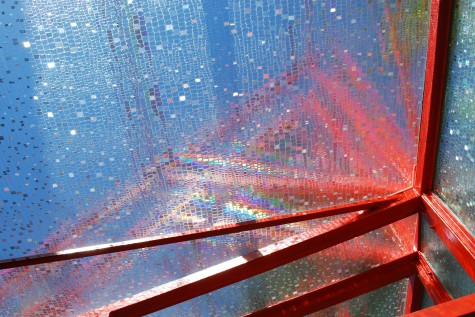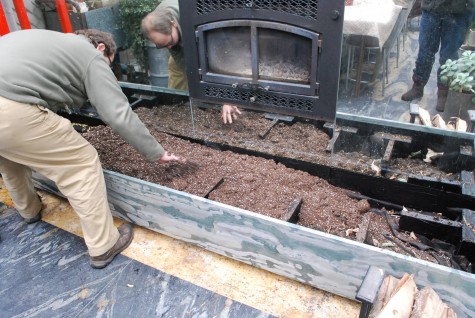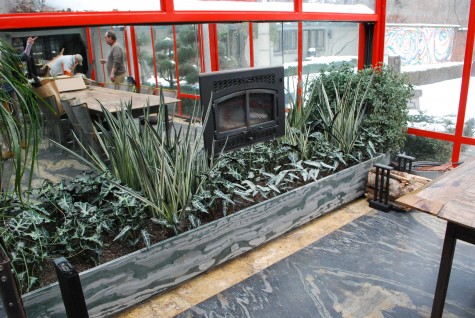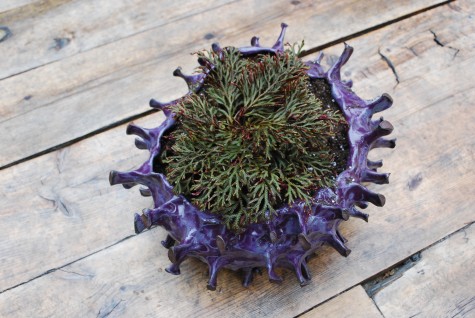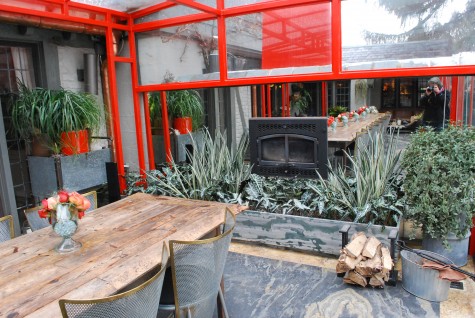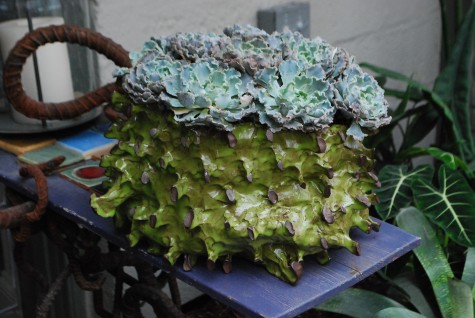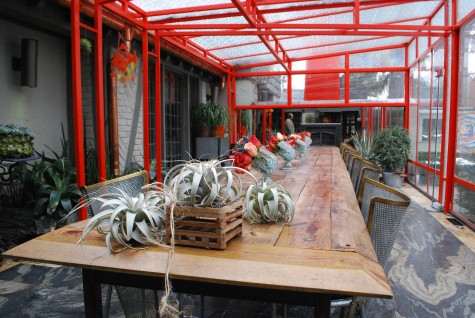I can understand why the idea of a conservatory or greenhouse space is so incredibly attractive. I live in a climate that is inhospitable, even foul almost half the year-if you like growing plants, that is. This room in the shop had no windows, but thanks to a used Lord and Burnham greenhouse from which I salvaged the roof, I have a green space. It smells like warm dirt, moisture laden air, and plants-intoxicating. Even when nothing is blooming, it still smells like life. The climbing fig that covers two of the four walls is probably 10 years old now. I had to have it, after seeing the hundred year old vines in the conservatory at Dunbarton Oaks. I thought the shop had to have water and plants someplace every day-it’s why we do what we do.
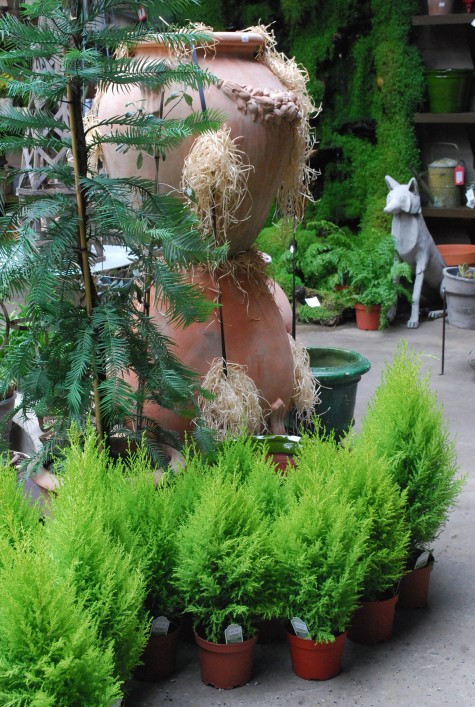 Though the weather is stubbornly refusing to give up winter and warm up, this room is warm and inviting. The first of our favorite spring green plants have come in. A single resident Wollemi pine lives happily in this space year round, even though we do not heat the space between January 15 and March 1. I am not a huge fan of tropical plants in the house. They always have that air of resignation about them; how theystruggle to survive in poor light, and hot dry house heat. This room offers good light, and protection from the elements.
Though the weather is stubbornly refusing to give up winter and warm up, this room is warm and inviting. The first of our favorite spring green plants have come in. A single resident Wollemi pine lives happily in this space year round, even though we do not heat the space between January 15 and March 1. I am not a huge fan of tropical plants in the house. They always have that air of resignation about them; how theystruggle to survive in poor light, and hot dry house heat. This room offers good light, and protection from the elements.
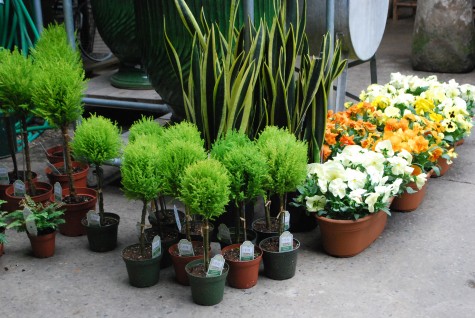 Elements? No snow is allowed here. No wind, no hail, no temperatures below 30, no ice. The space is not at the mercy of too much rain, or too little. We rarely have bugs in the winter-it is too chilly. Most everything goes outdoors once the weather is nice. We do have the occasional toad-how they find this room, I have no idea. It is a space we look after, and it rewards us with a place of refuge from winter. It is also a nursery-for plants that need hardening off. These topiary lemon cypress just arrived from California. Though they happily tolerate less than perfect conditions, they need to become acclimatized to the cold.
Elements? No snow is allowed here. No wind, no hail, no temperatures below 30, no ice. The space is not at the mercy of too much rain, or too little. We rarely have bugs in the winter-it is too chilly. Most everything goes outdoors once the weather is nice. We do have the occasional toad-how they find this room, I have no idea. It is a space we look after, and it rewards us with a place of refuge from winter. It is also a nursery-for plants that need hardening off. These topiary lemon cypress just arrived from California. Though they happily tolerate less than perfect conditions, they need to become acclimatized to the cold.
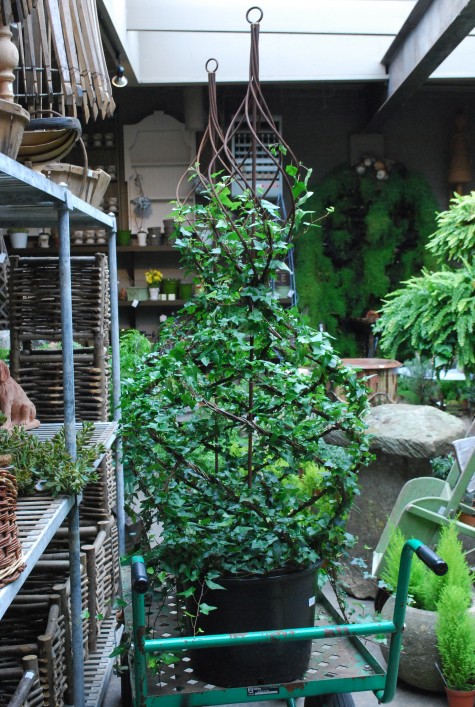 These ivy topiary are lovely. Though they require some work to maintain their beautiful form, they are otherwise little care. A summer outdoors recuperating from being inside all winter they will appreciate. They are a complete vision of a garden, in and of themselves.
These ivy topiary are lovely. Though they require some work to maintain their beautiful form, they are otherwise little care. A summer outdoors recuperating from being inside all winter they will appreciate. They are a complete vision of a garden, in and of themselves.
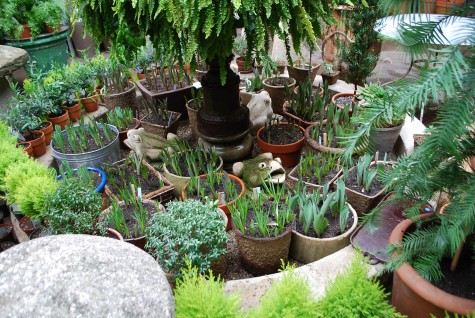 The bulb pots are coming on strong, having been moved to this space. We keep it at 55-60 degrees during the day, and 40-45 at night. The room is helping to create an atmosphere of spring. I have only participated in the design of 2 conservatories in my whole career. They are expensive, they require loads of proper engineering, and they can be the devil to get working properly.
The bulb pots are coming on strong, having been moved to this space. We keep it at 55-60 degrees during the day, and 40-45 at night. The room is helping to create an atmosphere of spring. I have only participated in the design of 2 conservatories in my whole career. They are expensive, they require loads of proper engineering, and they can be the devil to get working properly.
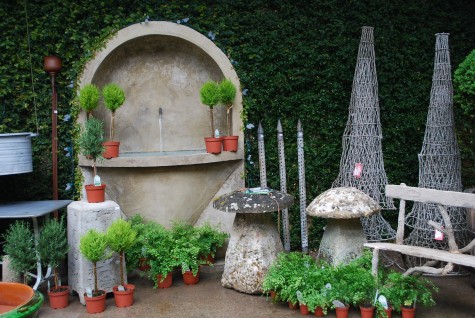 But today I see why gardeners build them. We have rosemary cones and single ball topiaries, lemon cypress in differing forms, and a collection of ferns. Fresh green plants-oxygen for the heart and soul. I asked Buck where we could have one. We can’t, he said. Too expensive, too problematic, too big a heat bill. It would be much easier to move to the shop greenhouse for the winter.
But today I see why gardeners build them. We have rosemary cones and single ball topiaries, lemon cypress in differing forms, and a collection of ferns. Fresh green plants-oxygen for the heart and soul. I asked Buck where we could have one. We can’t, he said. Too expensive, too problematic, too big a heat bill. It would be much easier to move to the shop greenhouse for the winter.
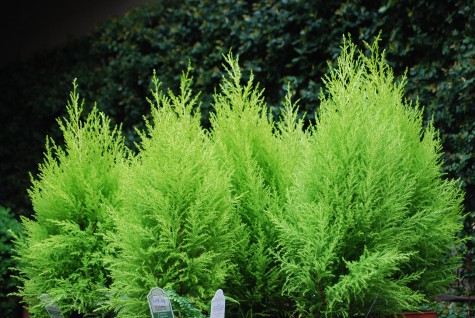 The lemon cypress are not hardy in my zone, but they are easy to keep over. They grow like weeds. That lime green color is accompanied by a faint scent of lemon. A collection of 6 inch pots-like a party. I have no interest in a greenhouse space in July. But October through March-wouldn’t it be lovely?
The lemon cypress are not hardy in my zone, but they are easy to keep over. They grow like weeds. That lime green color is accompanied by a faint scent of lemon. A collection of 6 inch pots-like a party. I have no interest in a greenhouse space in July. But October through March-wouldn’t it be lovely?

In the lower left of this picture, a pair of 3 gallon sanseveria. This black leaved lime-edged variety is quite stunning. They would be so striking in a simple container in a very shady place, fringed with lime selaginella. I can feel a fever coming on. The greenhouse space is providing some welcome heat.

